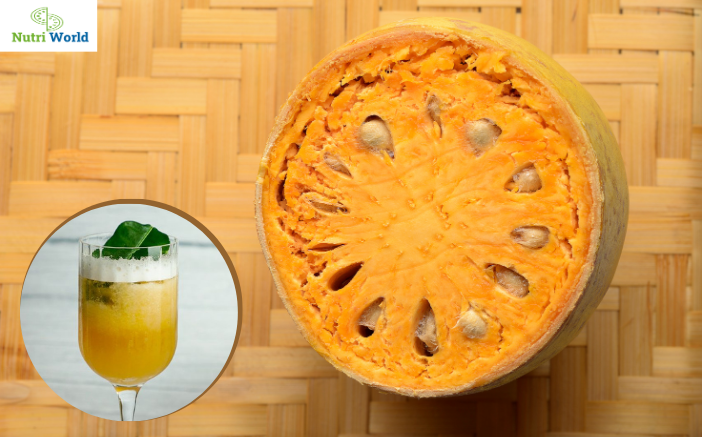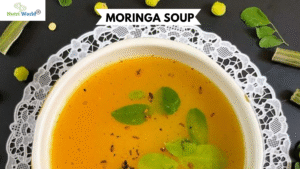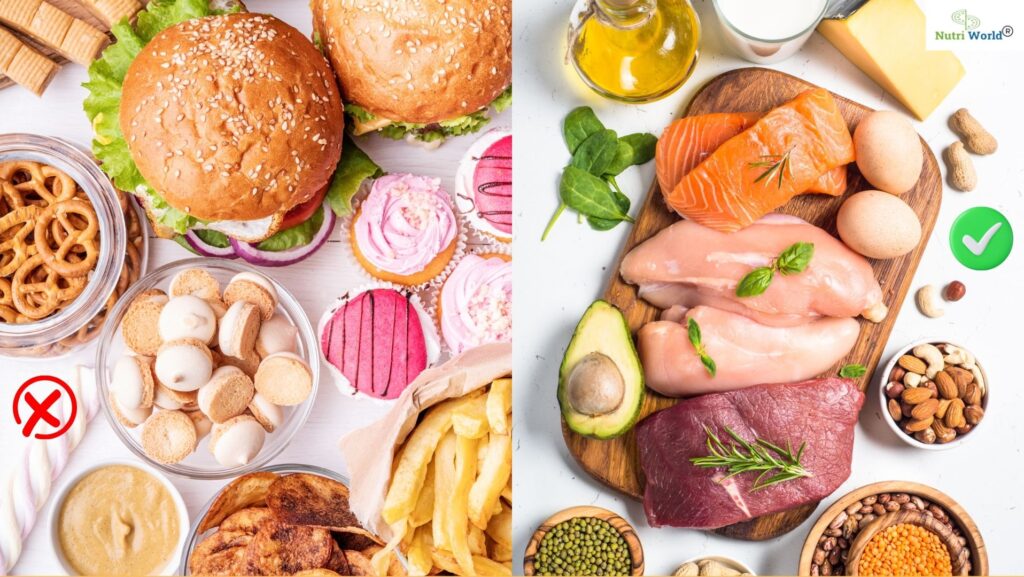By Nutriworld | Dt. Dipanwita Saha
In the ever-evolving world of nutrition, few superfoods have gained as much spotlight as matcha. Once a ceremonial tea in Japan, matcha has now crossed continents, appearing in lattes, smoothies, desserts, and even skincare products. But beyond the Instagram-worthy green color, is matcha truly the healthiest choice among teas? Time to spill the tea (literally!)
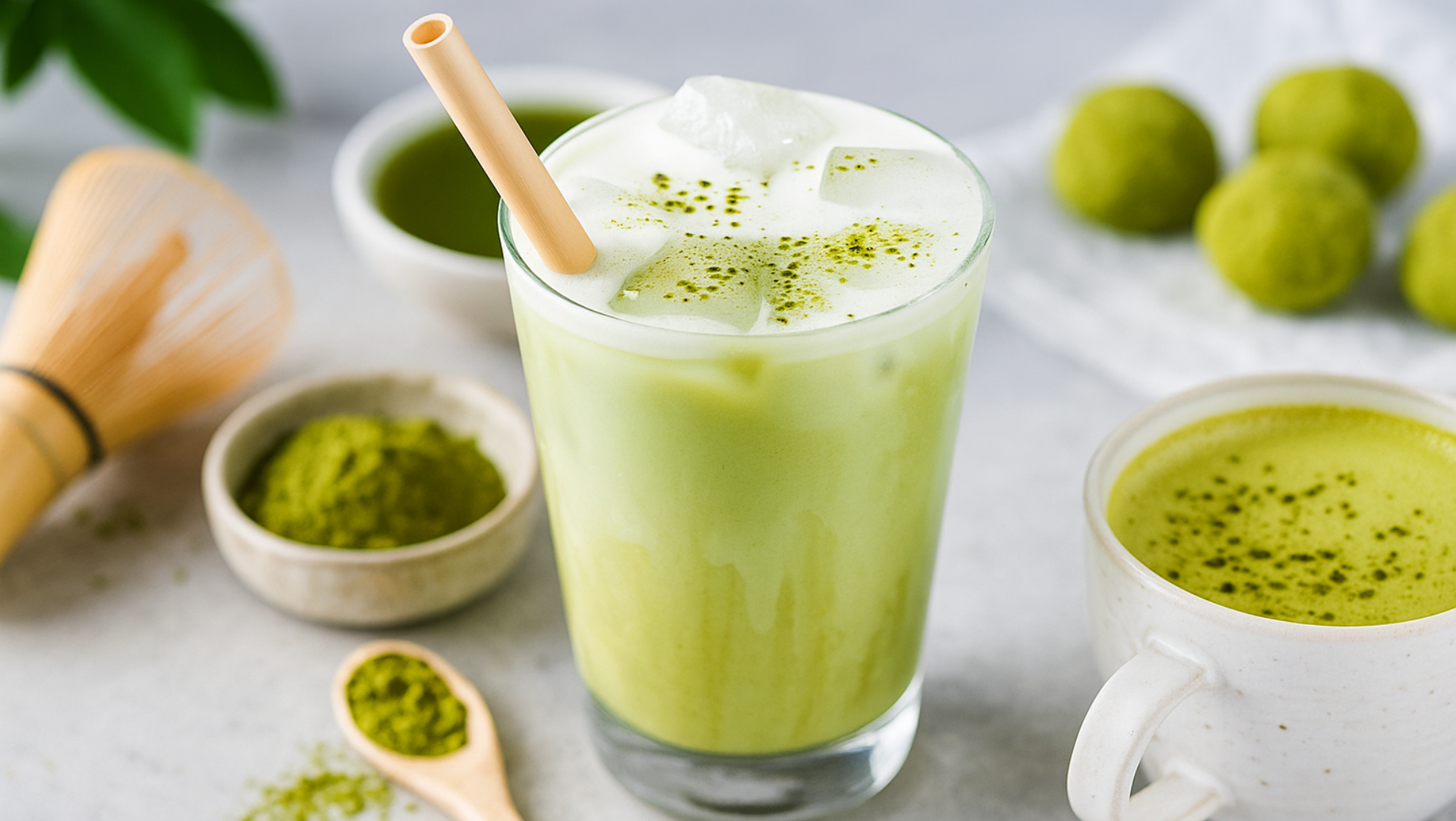
What Makes Matcha Different?
Unlike regular green tea, where leaves are steeped and then discarded, matcha is made by grinding whole green tea leaves into a fine powder. This means when you drink matcha, you’re consuming the entire leaf — and with it, a more concentrated dose of nutrients.
Nutrient Powerhouse of Matcha
- Rich in Antioxidants – Matcha is loaded with catechins, particularly EGCG (epigallocatechin gallate), known for fighting oxidative stress and lowering inflammation.
- Calm Energy Boost – The combination of caffeine + L-theanine provides sustained alertness without the jitters of coffee.
- Metabolism & Weight Management – Research suggests EGCG may enhance fat oxidation and support metabolism.
- Heart & Brain Health – Regular consumption has been linked to improved cholesterol levels and better cognitive performance.
- Detoxifying Chlorophyll – Its vibrant green color comes from chlorophyll, which supports natural detoxification.
Matcha vs. Coffee vs. Green Tea — What’s the Best Buzz?
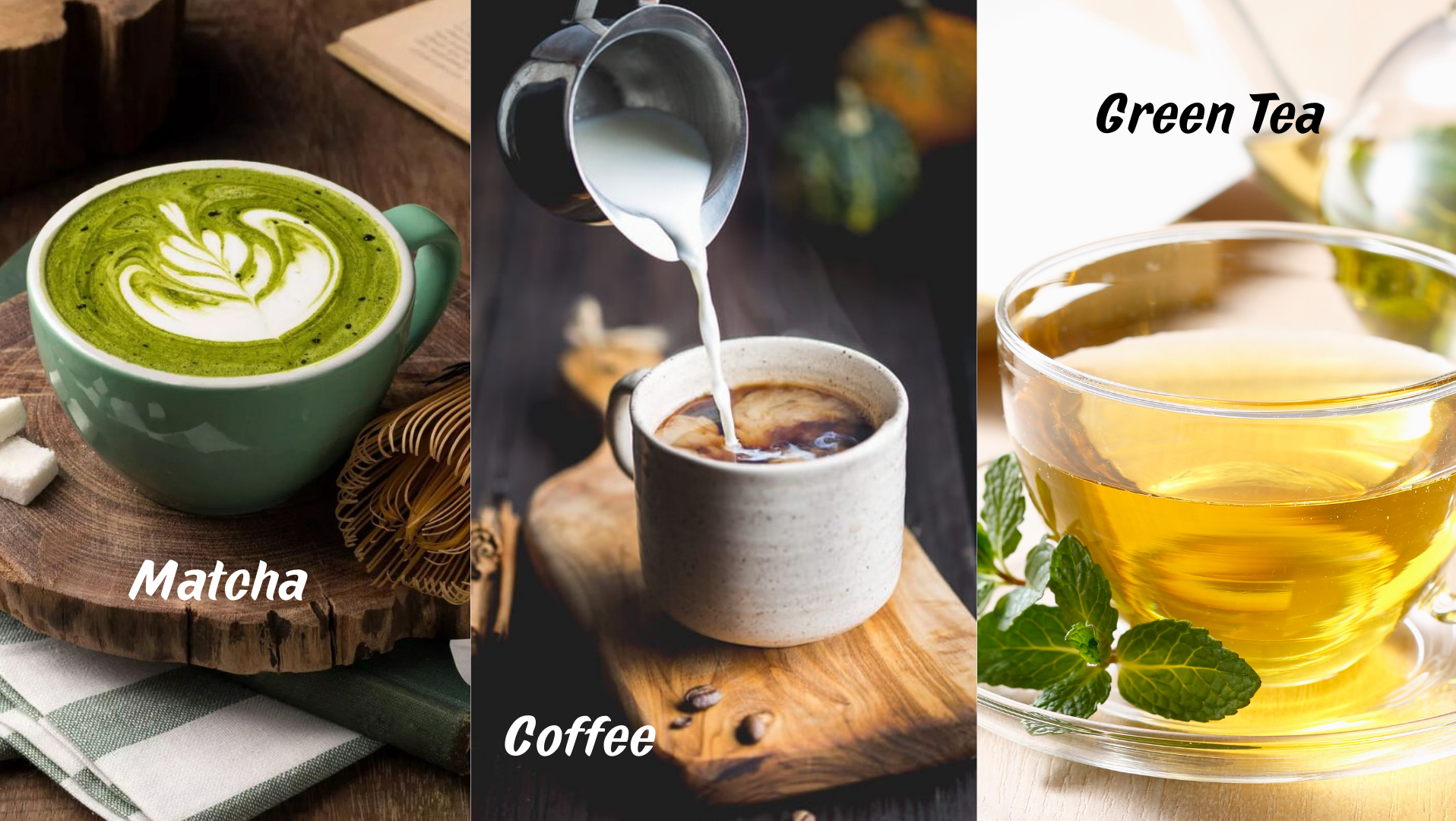
Coffee: Fast Spike, Faster Crash
- Coffee delivers a strong punch of caffeine that quickly boosts focus and alertness.
- But when this caffeine rush wears off, it often results in a caffeine crash: fatigue, irritability, and brain fog.
Green Tea: Gentle & Grounded
- Green tea gives you a steadier, milder energy boost.
- It’s packed with antioxidants like EGCG, supporting heart, brain, and metabolic health—even if it’s less concentrated than matcha.
Matcha: Calm Energy, Real Power
- Matcha delivers a powerful yet balanced buzz of caffeine depending on quality and preparation.
- Its L-theanine + caffeine combo collaborates to boost focus while keeping you relaxed, helping you avoid both jitters and crashes.
- Matcha’s antioxidant game is strong: According to PubMed you get 3 to 137 times more EGCG than from regular green tea, depending on the study.
How to Enjoy Matcha
- Traditional whisked tea (ceremonial style)
- Matcha lattes with oat or almond milk
- Added to smoothies, oatmeal, or yogurt
- Baked into energy bars, pancakes, or cookies
Things to Keep in Mind
- Contains caffeine — not ideal in large amounts for sensitive individuals.
- Quality matters — lower-grade matcha may contain contaminants or less nutrient density.
- Best consumed in moderation as part of a balanced diet.
Matcha isn’t just a trend; it’s a nutritional powerhouse with roots in centuries-old tradition. From boosting metabolism to calming the mind, it offers unique benefits that make it stand out in the world of teas.
So, is matcha the healthiest choice? While no single food is a magic bullet, matcha certainly earns its place as a superfood ally for anyone looking to combine wellness, mindfulness, and taste in one cup.
BY, Shehnaz Yasmin
MSc in Applied Nutrition(WBUHS),UGC NET JRF Qualified

